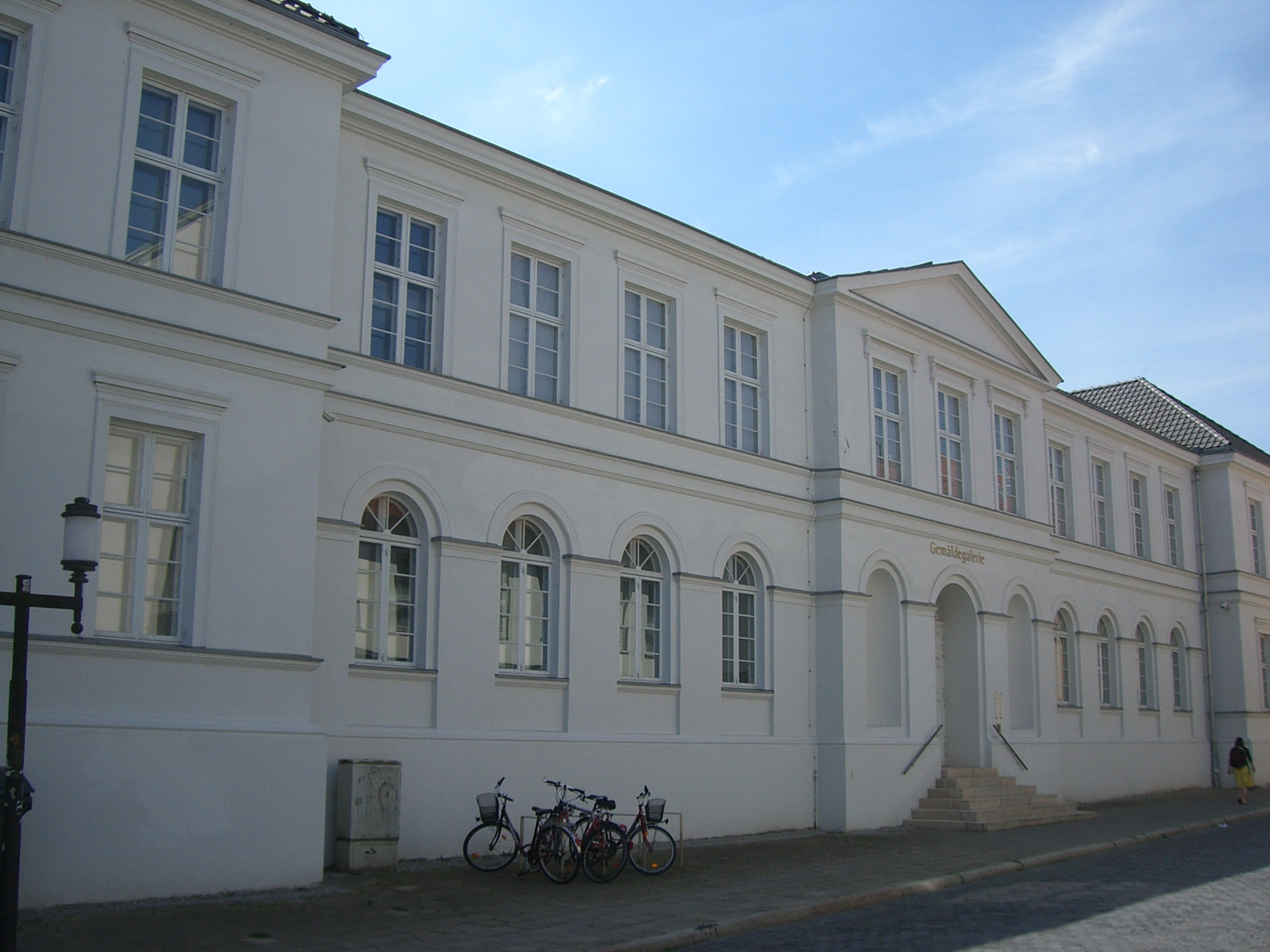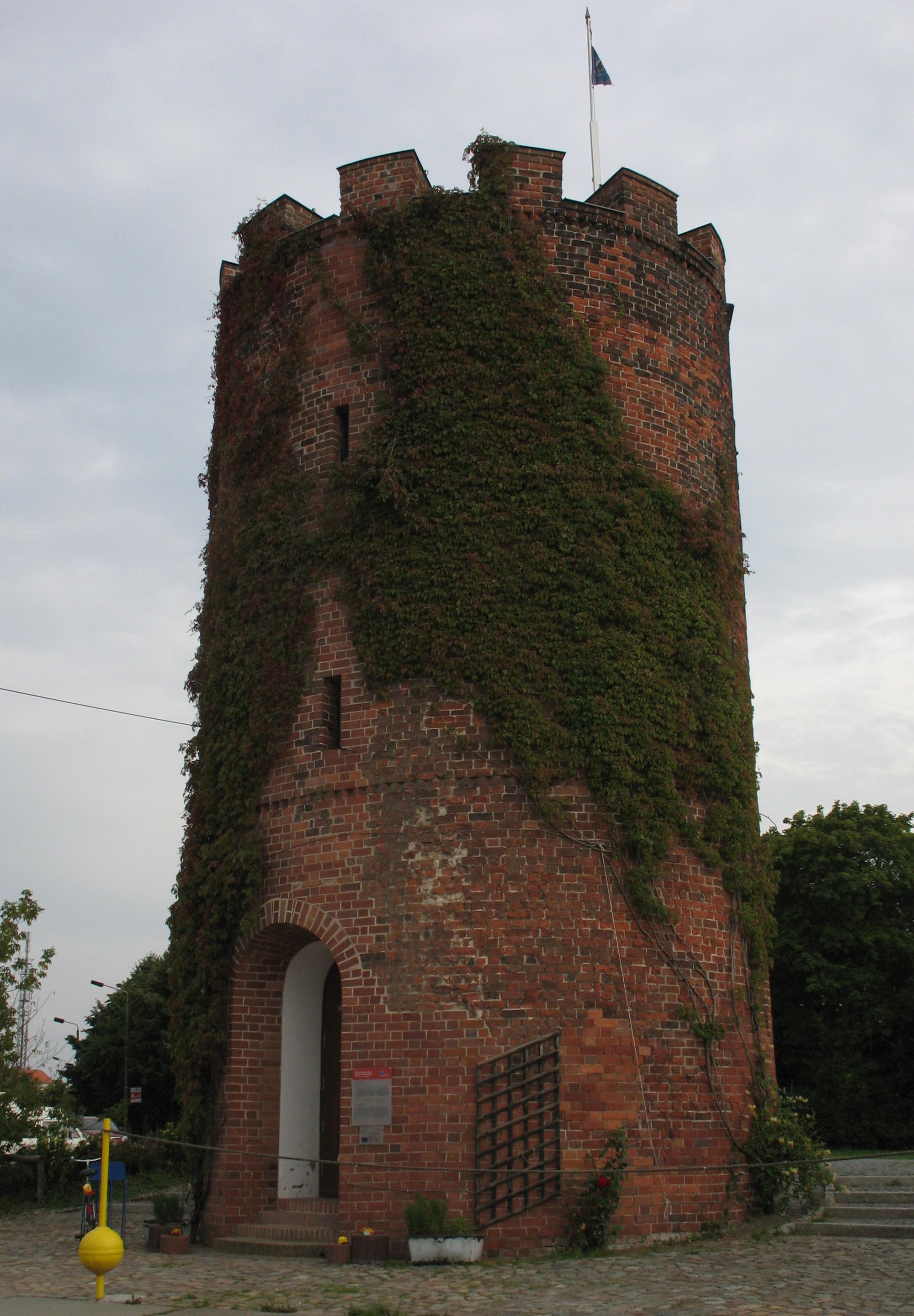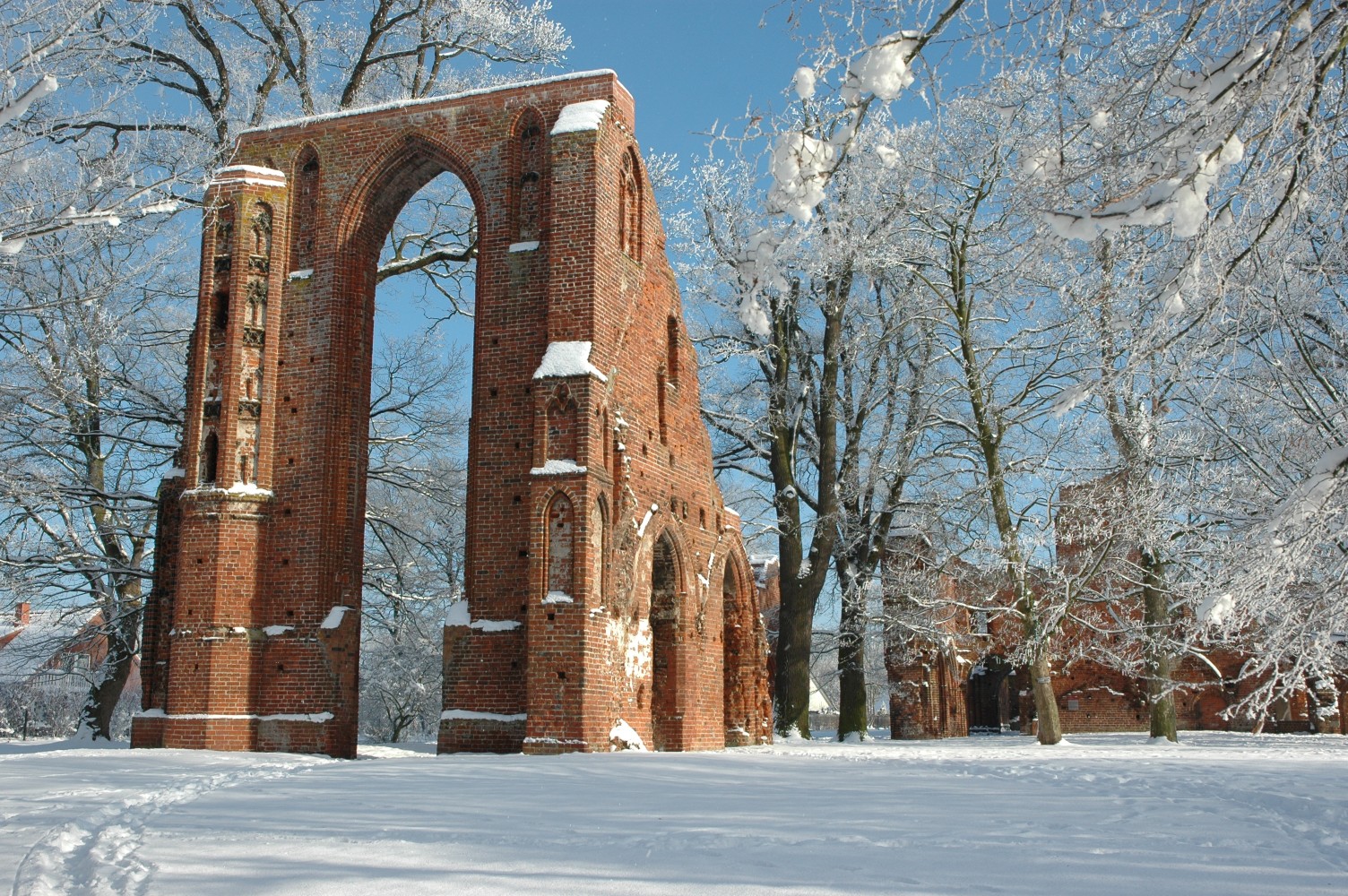|
Pomeranian State Museum
The Pomeranian State Museum (german: Pommersches Landesmuseum) in Greifswald, Western Pomerania, is a public museum primarily dedicated to Pomeranian history and arts. The largest exhibitions show archeological findings and artefacts from the Pomerania region and paintings, e.g. of Caspar David Friedrich, a Greifswald local, such as '' Ruins of Eldena Abbey in the Riesengebirge''. The museum was established in the years of 1998 to 2005 at the site of the historical Franziskaner abbey. Near Binz on the nearby isle of Rügen, a satellite of the museum is under construction at '' Jagdschloss Granitz'', a former hunting lodge of the Rugian princes. This branch will be designated to Rugian history. An early 20th century museum in Stettin, then capital of the Province of Pomerania, was the "Provinzialmuseum pommerscher Altertümer", which was also named "Pommersches Landesmuseum" (Pomerania State Museum) since 1934.Werner Buchholz, ''Pommern'', Siedler, 1999, p. 438, Gall ... [...More Info...] [...Related Items...] OR: [Wikipedia] [Google] [Baidu] |
Greifswald
Greifswald (), officially the University and Hanseatic City of Greifswald (german: Universitäts- und Hansestadt Greifswald, Low German: ''Griepswoold'') is the fourth-largest city in the German state of Mecklenburg-Western Pomerania after Rostock, Schwerin and Neubrandenburg. In 2021 it surpassed Stralsund for the first time, and became the largest city in the Pomeranian part of the state. It sits on the River Ryck, at its mouth into the Danish Wiek (''Dänische Wiek''), a sub-bay of the Bay of Greifswald (''Greifswalder Bodden''), which is itself a sub-bay of the Bay of Pomerania (''Pommersche Bucht'') of the Baltic Sea. It is the seat of the district of Western Pomerania-Greifswald, and is located roughly in the middle between the two largest Pomeranian islands of Rugia (''Rügen'') and Usedom. The closest larger cities are Stralsund, Rostock, Szczecin and Schwerin. It lies west of the River Zarow, the historical cultural and linguistic boundary between West (west of the r ... [...More Info...] [...Related Items...] OR: [Wikipedia] [Google] [Baidu] |
Rügen
Rügen (; la, Rugia, ) is Germany's largest island. It is located off the Pomeranian coast in the Baltic Sea and belongs to the state of Mecklenburg-Western Pomerania. The "gateway" to Rügen island is the Hanseatic city of Stralsund, where it is linked to the mainland by road and railway via the Rügen Bridge and Causeway, two routes crossing the two-kilometre-wide Strelasund, a sound of the Baltic Sea. Rügen has a maximum length of (from north to south), a maximum width of in the south and an area of . The coast is characterized by numerous sandy beaches, lagoons () and open bays (), as well as projecting peninsulas and headlands. In June 2011, UNESCO awarded the status of a World Heritage Site to the Jasmund National Park, famous for its vast stands of beeches and chalk cliffs like King's Chair, the main landmark of Rügen island. The island of Rügen is part of the district of Vorpommern-Rügen, with its county seat in Stralsund. The towns on Rügen are: Bergen, S ... [...More Info...] [...Related Items...] OR: [Wikipedia] [Google] [Baidu] |
Local Museums In Germany
Local may refer to: Geography and transportation * Local (train), a train serving local traffic demand * Local, Missouri, a community in the United States * Local government, a form of public administration, usually the lowest tier of administration * Local news, coverage of events in a local context which would not normally be of interest to those of other localities * Local union, a locally based trade union organization which forms part of a larger union Arts, entertainment, and media * Local (comics), ''Local'' (comics), a limited series comic book by Brian Wood and Ryan Kelly * Local (novel), ''Local'' (novel), a 2001 novel by Jaideep Varma * Local TV LLC, an American television broadcasting company * Locast, a non-profit streaming service offering local, over-the-air television * The Local (film), ''The Local'' (film), a 2008 action-drama film * ''The Local'', English-language news websites in several European countries Computing * .local, a network address component * L ... [...More Info...] [...Related Items...] OR: [Wikipedia] [Google] [Baidu] |
Museums In Mecklenburg-Western Pomerania
A museum ( ; plural museums or, rarely, musea) is a building or institution that cares for and displays a collection of artifacts and other objects of artistic, cultural, historical, or scientific importance. Many public museums make these items available for public viewing through exhibits that may be permanent or temporary. The largest museums are located in major cities throughout the world, while thousands of local museums exist in smaller cities, towns, and rural areas. Museums have varying aims, ranging from the conservation and documentation of their collection, serving researchers and specialists, to catering to the general public. The goal of serving researchers is not only scientific, but intended to serve the general public. There are many types of museums, including art museums, natural history museums, science museums, war museums, and children's museums. According to the International Council of Museums (ICOM), there are more than 55,000 museums in 202 countrie ... [...More Info...] [...Related Items...] OR: [Wikipedia] [Google] [Baidu] |
Google Arts & Culture
Google Arts & Culture (formerly Google Art Project) is an online platform of high-resolution images and videos of artworks and cultural artifacts from partner cultural organizations throughout the world. It utilizes high-resolution image technology that enables the viewer to tour partner organization collections and galleries and explore the artworks' physical and contextual information. The platform includes advanced search capabilities and educational tools. A part of the images are used within Wikimedia and Wikipedia. Collections in Wikimedia The following list of collections is based on the Wikimedia category Google Art Project works by collection. The "Visit" link redirects to the museum's official page on the Google Arts & Culture platform. See alscollections in Google Arts & Culture The "Assigned works" link redirects to the images of the works shown in this collection available in Wikimedia. Painters in Wikimedia The following alphabetically ordered list of painters ... [...More Info...] [...Related Items...] OR: [Wikipedia] [Google] [Baidu] |
Province Of Pomerania (1815–1945)
The Province of Pomerania (german: Provinz Pommern; pl, Prowincja Pomorze) was a province of Prussia from 1815 to 1945. Pomerania was established as a province of the Kingdom of Prussia in 1815, an expansion of the older Brandenburg-Prussia province of Pomerania, and then became part of the German Empire in 1871. From 1918, Pomerania was a province of the Free State of Prussia until it was dissolved in 1945 following World War II, and its territory divided between Poland and Allied-occupied Germany. The city of Stettin (present-day Szczecin, Poland) was the provincial capital. Etymology The name ''Pomerania'' comes from Slavic , which means "Land at the Sea". Overview The province was created from the former Prussian Province of Pomerania, which consisted of Farther Pomerania and the southern Western Pomerania, and former Swedish Pomerania. It resembled the territory of the former Duchy of Pomerania, which after the Peace of Westphalia in 1648 had been split between Bra ... [...More Info...] [...Related Items...] OR: [Wikipedia] [Google] [Baidu] |
Stettin
Szczecin (, , german: Stettin ; sv, Stettin ; Latin language, Latin: ''Sedinum'' or ''Stetinum'') is the capital city, capital and largest city of the West Pomeranian Voivodeship in northwestern Poland. Located near the Baltic Sea and the Poland-Germany border, German border, it is a major port, seaport and Poland's seventh-largest city. As of December 2021, the population was 395,513. Szczecin is located on the river Oder, south of the Szczecin Lagoon and the Bay of Pomerania. The city is situated along the southwestern shore of Dąbie Lake, on both sides of the Oder and on several large islands between the western and eastern branches of the river. Szczecin is adjacent to the Police, West Pomeranian Voivodeship, town of Police and is the urban centre of the Szczecin agglomeration, an extended metropolitan area that includes communities in the States of Germany, German states of Brandenburg and Mecklenburg-Western Pomerania. Szczecin is the administrative and industrial cen ... [...More Info...] [...Related Items...] OR: [Wikipedia] [Google] [Baidu] |
Principality Of Rügen
The Principality of Rügen; da, Fyrstendømmet Rygien; pl, Księstwo rugijskie; la, Rugia was a Danish principality, formerly a duchy, consisting of the island of Rügen and the adjacent mainland from 1168 until 1325. It was governed by a local dynasty of princes of the ''Wizlawiden'' (''House of Wizlaw'') dynasty. For at least part of this period, Rügen was subject to the Holy Roman Empire. Danish conquest and conversion The Danes conquered the Rani stronghold of Arkona in 1168. The rulers of the Rani became vassals of the Danish king, and the Slavic population was gradually Christianized. In the 12th century, the Duchy of Rügen not only functioned as a bridgehead for Danish expansions into ''Vendland'', but also Rani forces successfully participated in Danish raids into Circipania and areas conquered by Pomerania's Wartislaw I in the 1120s. After Pomerania became part of the Holy Roman Empire in 1181, it sent out a navy in 1184 to subdue Rügen for the empire, too. ... [...More Info...] [...Related Items...] OR: [Wikipedia] [Google] [Baidu] |
Jagdschloss Granitz
Granitz Hunting Lodge (german: Jagdschloss Granitz) is located on the German island of Rügen in the vicinity of the seaside resort of Binz. With over 200,000 visitors per year it is the most popular castle or ''schloss'' in Mecklenburg-Vorpommern.Ostsee-Zeitung, 12 April 2008, p. 6 Location The lodge lies in the middle of the forested Granitz ridge, which covers an area of about and has been part of the Southeast Rügen Biosphere Reserve since 1991. The name ''Tempelberg'' given to the highest hill in the Granitz comes from the 18th century, when a small hexagonal belvedere stood on the site of the present ''schloss''. The quickest way to get there is from the Baltic seaside resort of Binz on the Rügen Light Railway or the Hunting Lodge Express (''Jagdschlossexpress''). History The hunting lodge (''Jagdschloss'') was built on the highest hill in East Rügen, the high Tempelberg, in the years 1838 to 1846 by order of Prince Wilhelm Malte I of Putbus, based on a design b ... [...More Info...] [...Related Items...] OR: [Wikipedia] [Google] [Baidu] |
Binz
Binz is the largest seaside resort on the German island of Rügen. It is situated between the bay of Prorer Wiek and the ''Schmachter See'' (a lake) in the southeast of the island. To the north of Binz stretches the Schmale Heide (the "narrow heath"), a tongue of land which joins the Muttland region of Rügen to the Jasmund peninsula. The land to the south and east of Binz is hilly, reaching a height of over 100 metres above sea level. Binz is known for its well-kept historical resort architecture and natural scenery, close to the Jasmund National Park and its chalk cliffs. Geography Location Binz lies on the eastern coast of the island of Rügen between the bay of Prorer Wiek and the lake of Schmachter See. North of Binz is the Schmale Heide, a neck of land that links the Muttland – Rügen's central region – with the peninsula of Jasmund. East and south of the municipality, the land is rolling, in the southeast, in the Granitz, the land climbs to just over . The reso ... [...More Info...] [...Related Items...] OR: [Wikipedia] [Google] [Baidu] |
Greifswald - Pommersches Landesmuseum
Greifswald (), officially the University and Hanseatic City of Greifswald (german: Universitäts- und Hansestadt Greifswald, Low German: ''Griepswoold'') is the fourth-largest city in the German state of Mecklenburg-Western Pomerania after Rostock, Schwerin and Neubrandenburg. In 2021 it surpassed Stralsund for the first time, and became the largest city in the Pomeranian part of the state. It sits on the River Ryck, at its mouth into the Danish Wiek (''Dänische Wiek''), a sub-bay of the Bay of Greifswald (''Greifswalder Bodden''), which is itself a sub-bay of the Bay of Pomerania (''Pommersche Bucht'') of the Baltic Sea. It is the seat of the district of Western Pomerania-Greifswald, and is located roughly in the middle between the two largest Pomeranian islands of Rugia (''Rügen'') and Usedom. The closest larger cities are Stralsund, Rostock, Szczecin and Schwerin. It lies west of the River Zarow, the historical cultural and linguistic boundary between West (west of the rive ... [...More Info...] [...Related Items...] OR: [Wikipedia] [Google] [Baidu] |
Franciscan
The Franciscans are a group of related Mendicant orders, mendicant Christianity, Christian Catholic religious order, religious orders within the Catholic Church. Founded in 1209 by Italian Catholic friar Francis of Assisi, these orders include three independent orders for men (the Order of Friars Minor being the largest contemporary male order), orders for women religious such as the Order of Saint Clare, and the Third Order of Saint Francis open to male and female members. They adhere to the teachings and spiritual disciplines of the founder and of his main associates and followers, such as Clare of Assisi, Anthony of Padua, and Elizabeth of Hungary. Several smaller Franciscan spirituality in Protestantism, Protestant Franciscan orders exist as well, notably in the Anglican and Lutheran traditions (e.g. the Community of Francis and Clare). Francis began preaching around 1207 and traveled to Rome to seek approval from Pope Innocent III in 1209 to form a new religious order. The o ... [...More Info...] [...Related Items...] OR: [Wikipedia] [Google] [Baidu] |





